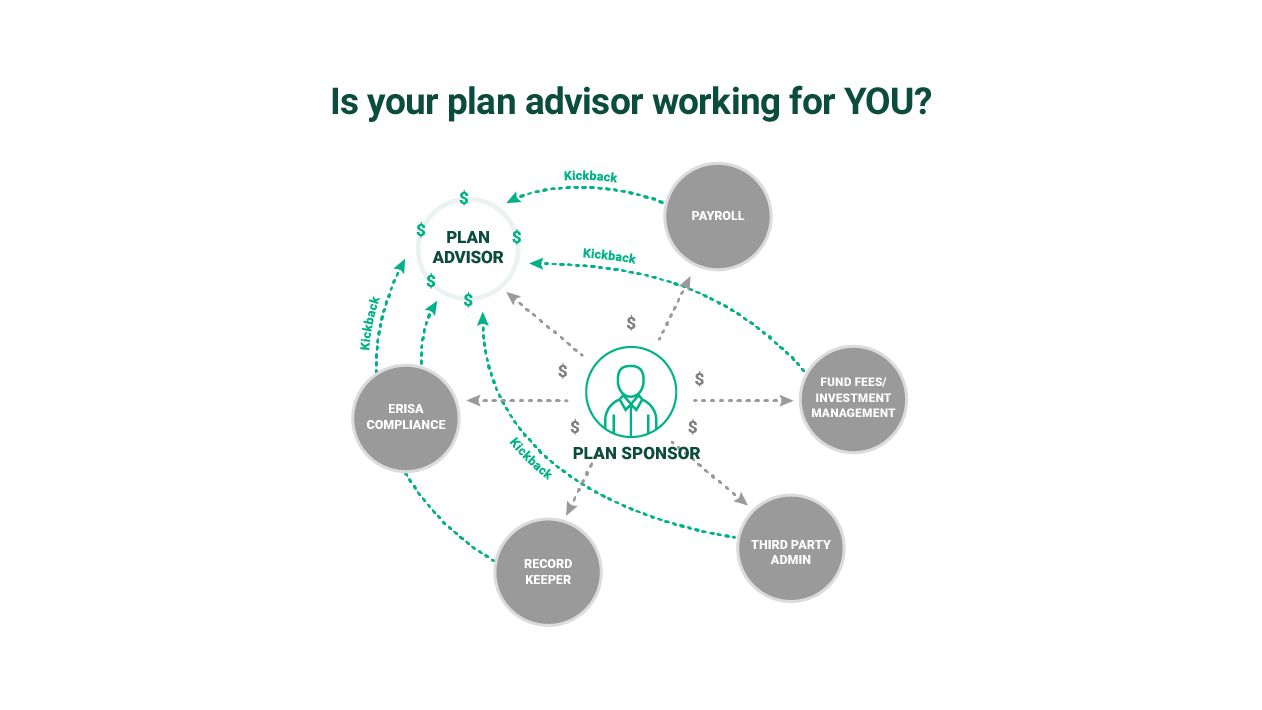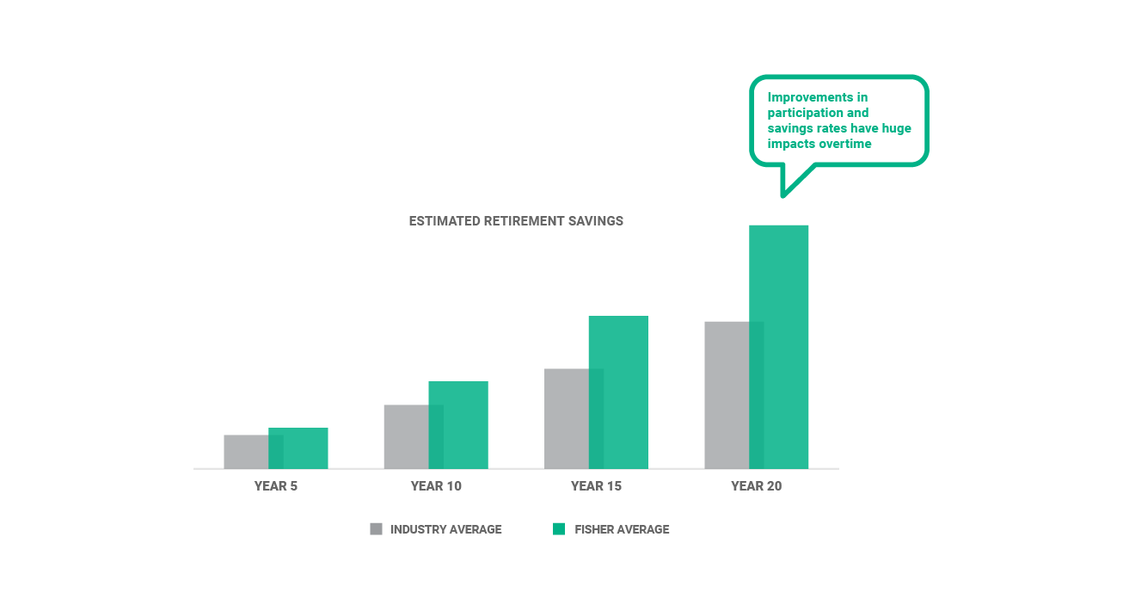Business 401(k) Services / 401(k) Plan Optimization
10 Essential Cash Balance Plan Questions
If you run a successful business with steady revenue, you can save more for retirement while cutting your personal and business income taxes. How? By adding a cash balance plan to your company’s 401(k). Cash balance plans are complex and aren’t right for every business. Let’s review some of the most common questions about cash balance plans to see whether one is worth considering for your business.
What Is a Cash Balance Plan?
According to the U.S. Department of Labor, there are two general types of retirement plans: defined benefit plans and defined contribution plans. A cash balance plan is a defined benefit plan that acts in some ways like a defined contribution plan. Because it incorporates elements of both, it’s sometimes called a “hybrid” plan.
What this means is that each eligible employee enrolled in a cash balance plan receives a guaranteed amount (defined benefit) at retirement. What makes a cash balance plan a hybrid between a defined benefit plan and a defined contribution plan is that the guaranteed amount is based on ongoing—and fixed—annual contributions from your business. The advantage? This hybrid format allows for larger tax deductions and accelerated retirement savings, while maintaining some of the flexibility and portability of a defined contribution plan.
What Are the Benefits of a Cash Balance Plan?
A cash balance plan can help business owners accelerate their retirement savings and realize significant annual tax deductions because the annual contribution limits for a cash balance plan are higher than the 401(k) limits, even if the plan includes profit sharing. Your business can put more into a cash balance plan, which means you can get larger payments in retirement.
For example, the annual maximum contribution for a 401(k) profit sharing plan is limited to $70,000 ($77,500 for age 50 and older) for 2025, while the maximum contribution for a cash balance plan can be as high as $403,000. The table below shows the annual maximum cash balance plan contributions—based on age—for 2025. Cash balance contributions reduce the owner's taxable income dollar for dollar and grow tax deferred.

How Does a Cash Balance Plan Work?
With a cash balance plan, each participant’s benefit grows annually in two ways: a contribution credit and an interest crediting rate (ICR). Participant benefits are guaranteed by the employer who solely bears the investment risk.
The contribution credit is the amount that the employer contributes annually on behalf of the owners and participants. The contribution is deposited the following year prior to business taxes being filed. This amount can either be a flat dollar value or a percentage of income. How much your business contributes to employees and owners can be different, so long as the plan passes compliance testing. The annual funding formula is specific for each company and is dependent on employee demographics and employer goals. It’s typically a good idea to model your funding options to help you evaluate whether this is a good strategy.
The interest crediting rate (ICR) is the rate at which the plan guarantees interest on accumulated contributions. This rate is typically tied to an index, such as the 30-year treasury yield.
An actuary keeps track of contributions, credits, and whether your plan is staying within the rules. Your actuary calculates the required employer contribution each year based on market growth of plan assets, plan census data and the interest crediting rate. The actuary also makes sure that the plan passes annual compliance testing. These tests make sure contributions made to highly compensated employees bear a reasonable relationship to contributions made to non-highly compensated employees.
Assets within a cash balance plan are pooled and come only from the employer. Investments are directed by the plan trustee, not individual participants. Typically, investments within the plan seek returns that are consistent with the interest crediting rate to minimize risk for the employer.
Cash balance plans are generally used in conjunction with a 401(k) profit sharing plan in order to maximize benefits to the owner and pass compliance testing. Contributing to a 401(k) profit sharing plan provides some funding flexibility to the employer. This can also help mitigate the employer’s investment risk because assets in the 401(k) profit sharing plan are not subject to the employer-guaranteed interest crediting rate.
All this is to say a cash balance plan is complex to administer and requires experienced professionals who can help you follow the rules and maximize the tax benefits.
Who Is Eligible for a Cash Balance Plan?
A cash balance plan can be designed to provide different levels of benefit to different employees, as long as annual non-discrimination requirements are satisfied. For example, in some cases a plan could provide $100,000 per year to owners and 2% of compensation to other eligible employees. At a minimum, a cash balance plan must cover 40% of employees or 50 employees, whichever is less.
Are There Risks Associated with a Cash Balance Plan?
Any investment plan carries risk. With a cash balance plan, those risks are borne solely by the employer.
While the benefits of a cash balance plan can seem attractive to business owners, the biggest risk to consider is value fluctuation.
The employer guarantees that the assets within the plan will grow by the stated interest crediting rate (ICR), regardless of actual market performance. This means that no matter how markets perform, your cash balance plan must be able to cover the agreed-upon interest rate.
For example, if the beginning of year balance is $100,000 and the interest crediting rate is 4%, the end of the year balance should be close to $104,000. If, due to market performance, the EOY balance is only $50,000, the employer is responsible to fully fund the $54,000 shortfall in addition to the planned contribution credit. If the contribution credit is $100,000, the employer’s contribution requirement is $154,000. The shortfall funding requirement can be amortized over seven years to help smooth out market volatility.
Conversely, if, due to market performance, the EOY balance is $124,000, the employer’s contribution requirement would decrease by $20,000. Instead of contributing $100,000, the employer must contribute $20,000 less, or $80,000, which decreases the employer’s tax deduction for that year.
Because market volatility affects the predictability of annual ongoing contributions, assets within a cash balance plan typically seek returns consistent with the ICR.
Where Does the Money for a Cash Balance Plan Come From?
All assets within a cash balance plan come from company coffers. Generally, a minimal amount is contributed on behalf of employees and a greater share is contributed for principals.
However, principals can use the cash balance contribution to reduce their personal taxable income. For example, a 50-year-old doctor who earns $500,000/year might choose to reduce their salary to $350,000 and take $150,000 as an annual cash balance plan contribution. Because money in the cash balance plan is tax-deferred, this directly reduces the doctor’s tax burden.
Adjusting compensation can get tricky when there are multiple principals involved. Some businesses have a practice manager who can facilitate individual meetings with principals to determine how much each would like to contribute.
What Should I Consider Before Establishing a Cash Balance Plan?
Fisher Investments will walk you through the following considerations to help you evaluate whether a cash balance plan is a good fit.
- Inflexible Funding. Contribution credits are required annually and cannot be modified from year to year. Before adopting a cash balance plan, the employer should be sure that it can commit to the ongoing annual funding requirements. If a business is unable to sustain cash flow sufficient to fund the plan over the long term, a cash balance plan is not a good option.
- Administrative Expense. A cash balance plan requires ongoing actuarial work, so it’s typically more costly to administer than a 401(k) profit sharing plan.
- Administrative Complexity. Generally, a cash balance plan is more complex than a 401(k) profit sharing plan. Because it’s a more sophisticated benefit, it requires ongoing administrative effort, additional decision-making, and additional costs.
Is a Cash Balance Plan Set in Stone?
Generally, yes. A cash balance plan should only be established if the employer intends for it to be “permanent.” The employer could possibly reduce the amount of future contributions to the cash balance plan as long as certain conditions are met. This can be done by either amending the plan document or “freezing” the benefit accruals. A cash balance plan can also be terminated in some circumstances, but it is a lengthy process and can be costly to the employer.
What Are the Roles and Responsibilities Associated with a Cash Balance Plan?
Fisher Investments partners with an independent actuary who helps your business evaluate your financial needs, goals, and circumstances. Each role in your cash balance plan is described below:
Employer
- As the plan fiduciary, selects and monitors service providers
- Provides and funds the plan
- Allocates assets among plan investment options
Fisher 401(k)
- As an ERISA 3(38) investment manager, Fisher selects, monitors, and updates the investment options available in the plan
- Supports the employer in selecting and monitoring service providers
- Facilitates communication between plan sponsor and service provider
Plan actuary and recordkeeper
- Creates plan documents
- Does annual actuarial calculations
- Carries out annual compliance testing
- Prepares IRS Form 5500
Who Is an Ideal Candidate for a Cash Balance Plan?
A cash balance plan may be a good fit for your business if some of the following are true:
- You or your business partners want to significantly increase your rate of retirement savings.
- Your business consistently produces steady revenue.
- You or your business partners have personal annual income greater than $275,000 and are seeking an annual tax deduction of $55,000 or more.
- Your company has fewer than 15 employees per one owner.
- You and your business partners are generally older than your employees.
- You already fund an employer contribution of 5% or more of employee compensation or are interested in doing so. This could include a profit sharing plan or safe harbor 401(k).
Want to Talk About it?
Our retirement plan specialists can help you dig into the details to determine whether a cash balance plan is the right move. Contact us today to start the conversation.

See our Business 401(k) Insights
Resources and articles to help your business with retirement plan support, optimization and administration.





